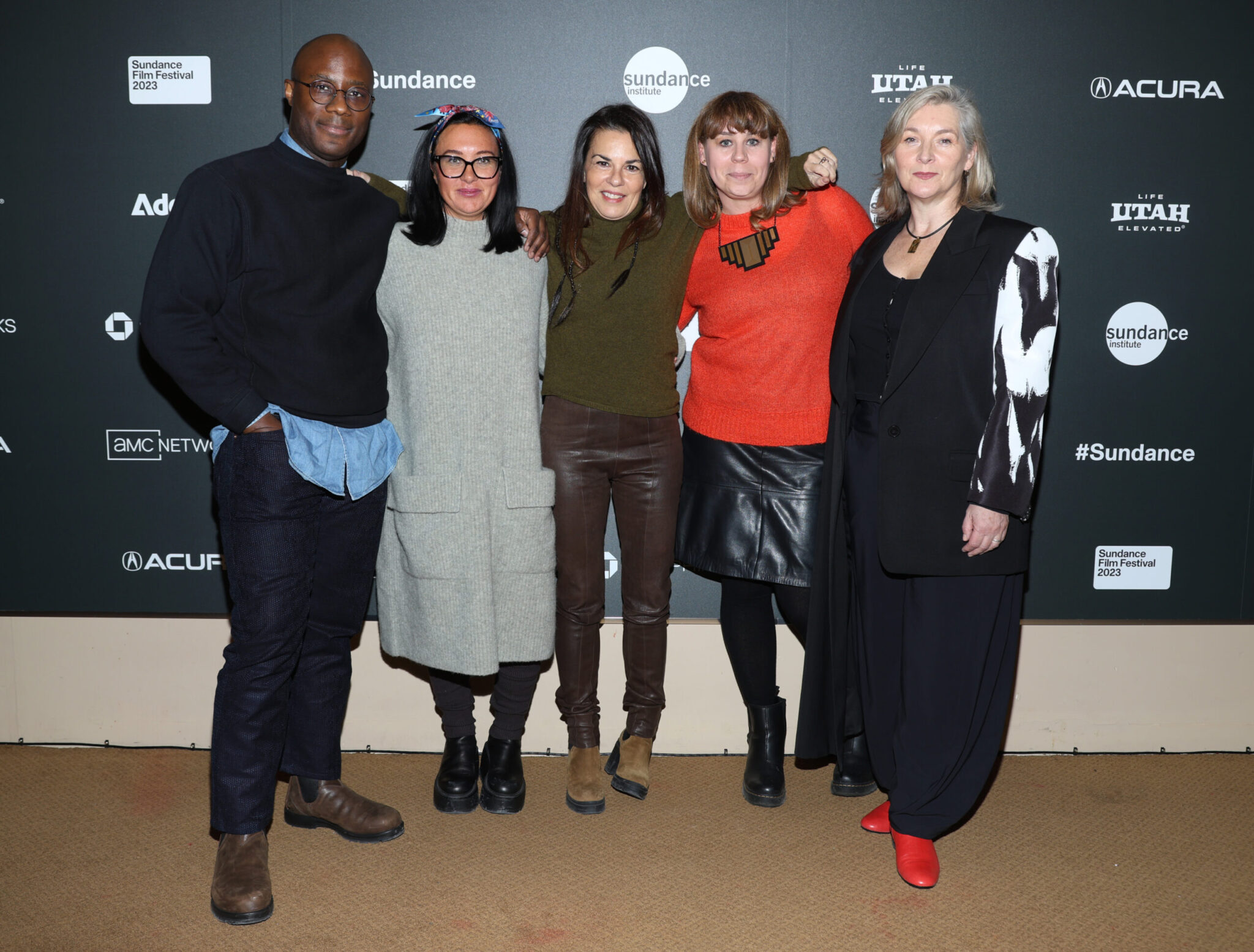PARK CITY, UTAH – JANUARY 22: (L-R) Barry Jenkins, Lisa Taddeo, Dr. Orna Guralnik, Sundance Film Festival Programmer Ania Trzebiatowska and Ita O’Brien attend the 2023 Sundance Film Festival Power Of Story at Egyptian Theatre on January 22, 2023 in Park City, Utah. (Photo by Steven Simione/Getty Images)
Intimacy in film is old as film itself. Since the ages of silent-era pornography and the pre-Code movies of the 1930s, sex in the cinema has been with us since the clicking of the first clapper board… but at what cost?
A panel of industry professionals discussed the not always cozy relationship between sex, intimacy, and film actors at a panel January 22 at the Egyptian Theatre.
In an era of Harvey Weinstein and on-set intimacy coaches, the discussion was wide-ranging and thoughtful. The consensus: Things have gotten a lot better, but there is still room for improvement when it comes to portraying sexual situations on screen.
“You watch those movies [from the 1970s, ’80s, and ’90s] and the sex is bad,” says director Barry Jenkins. “Now, in this era, I can’t wait to watch a show where the level of pictorial images and intimacy, both emotional and sexual, [is so much better]. It’s just at a whole new level.”
Much of the credit can be given to Ita O’Brien, a “movement director” who has pioneered the role of the on-set intimacy coordinator. Her job is to ensure everyone on set is as comfortable as possible when it comes to the sexual situations being portrayed.
“It’s a professional structure, and the role of the professional, just like a stunt coordinator, is to have a professional process by which we can engage with this content openly,” she says.
An example might be, “He’s going to put his hand there. Is that OK? What if he puts it here?”
This kind of openness and invitation to consent means actors have more control over their boundaries when it comes to portrayals of intimacy, and they can sometimes greatly affect how a scene is finally choreographed. Contrary to popular assumption in Hollywood, it is not always the women on set who raise the concerns, according to O’Brien.
“[For example,] someone said, ‘I don’t want to touch anybody’s breasts and nipples — and I don’t want anybody to touch my breasts and nipples.’ The actor was a man, but those were his boundaries,” O’Brien recalls.
Although the Weinstein controversy created a discussion about sex and power in the movie business, the movement toward intimacy coordination has been underway for years.
In past decades, it was largely the expectation that actors — male or female – were to simply play the edgy content, like it or not. Actors were actors after all, and if they couldn’t stand the heat, they were expected to get out of the bedroom — or the industry for that matter.
Author Lisa Taddeo, executive producer of Showtime’s adaptation of her largely sex-themed nonfiction work Three Women, says that project’s intimacy coordinator often seems to be the most powerful person on the set.
“The idea that the power has been given to the appropriate people is such a huge ‘get’ for everyone,” she says.
Still, Taddeo says she remains somewhat uncomfortable when she sees actors perform the highly personal sexual situations that she has imagined or recreated for the page.
“The big disruption for me was the idea that someone else, another woman’s body, was enacting a bodily truth of mine that is perhaps not hers,” the writer says. “I really got stuck on that for a while.”
The move to a more open and progressive approach to intimacy has made Jenkins realize how the discomfort of actors has been used by directors to create dramatic effect. It’s a moral and ethical dilemma, according to the writer-director-producer of Amazon’s The Underground Railroad. Jenkins recalled one particularly brutal scene in the series that depicted forced sex and caused him to rethink how far a director should go to get a good performance.
“For one of the actors in the scene, it was demeaning in the extreme. It was the male actor,” Jenkins says. “I used this actor’s discomfort to create the scene. It was like, ‘Everybody come in, and let’s have 12 people on the set to make this actor even more uncomfortable.’… It’s just not worth it.”
Jenkins quickly corrects himself.
“It’s not acceptable, I should say.”







